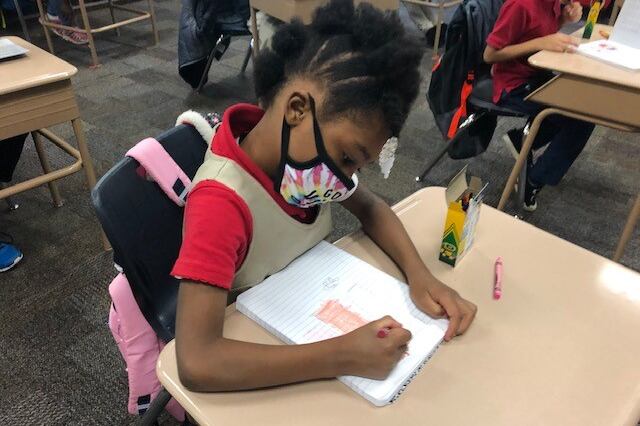In the beginning of the school year, Pike Township parent Amy Dirks decided her three children would learn online. So much was unknown about the coronavirus and how contagious it could be to children, she said. But now she’s had a change of heart.
She’s sending her children back into the classroom this semester.
“We decided that it’s worth the risk to send them because they are just not thriving with in-home,” Dirks said. Her second grader was falling behind in reading.
Other families are rethinking at-home learning because it isn’t going well or they’re worried about negative long-term learning effects. In Indianapolis Public Schools, Pike Township, and several other city school districts, slightly more parents are opting to send their children back to in-person school for the second semester, despite the rising coronavirus cases in Marion County.
Right now, in Indiana, vaccines won’t be widely available until approximately late summer. According to a New York Times database that includes local and state information, the average number of cases has increased by 34% from two weeks before.
Indianapolis parents were given two choices during the pandemic: They could send their children to learn in-person if schools were open, or opt for virtual learning. Educators widely believe that in-person learning is the best option for students if it’s safe to be in classrooms.
This semester, 77% of IPS families selected the in-person option when school buildings open again, compared to 75% from the fall semester.
In Franklin Township, about 86% of students will attend in-person for the third quarter, up from around 80% in the first quarter.
Pike Township’s Maggie Bishop, the assistant superintendent of secondary education, said 55% of Pike students chose in-person last fall. When the positivity rate drops to 10.4% and school buildings reopen, 63% of students will be learning in-person. Marion County’s positivity rate is currently 15.5%.
Bishop said she thinks more parents are selecting in-person because the district has set clear expectations. Students must wear masks and socially distance, and classrooms have desk shields.
“My hope is that they had an opportunity to see and or hear all of the safety measures that we put in place,” Bishop said.
Still, thousands of kids will stay online even if in-person learning becomes a reality this spring semester. Their parents think it’s too risky to go to school amid rising cases in the city.
Warren Township parent Sabrina Hoggard’s children have pre-existing conditions such as asthma. They have no choice but to remain online, even though it’s hard for them and their grades have been dropping. She feels like the school threw them into being college students. She said there were no walkthroughs or Zooms to help them navigate the online experience.
“I don’t believe they are learning at all,” Hoggard said. “They are overwhelmed. They have anxiety.”
She’s considered sending her children back to school in the spring, but they get sick often and she’s not convinced that children will keep their masks on at all times. Her eighth grader just recovered from COVID.
“That was a very, very scary thing to me,” Hoggard said. “I can’t risk that.”







